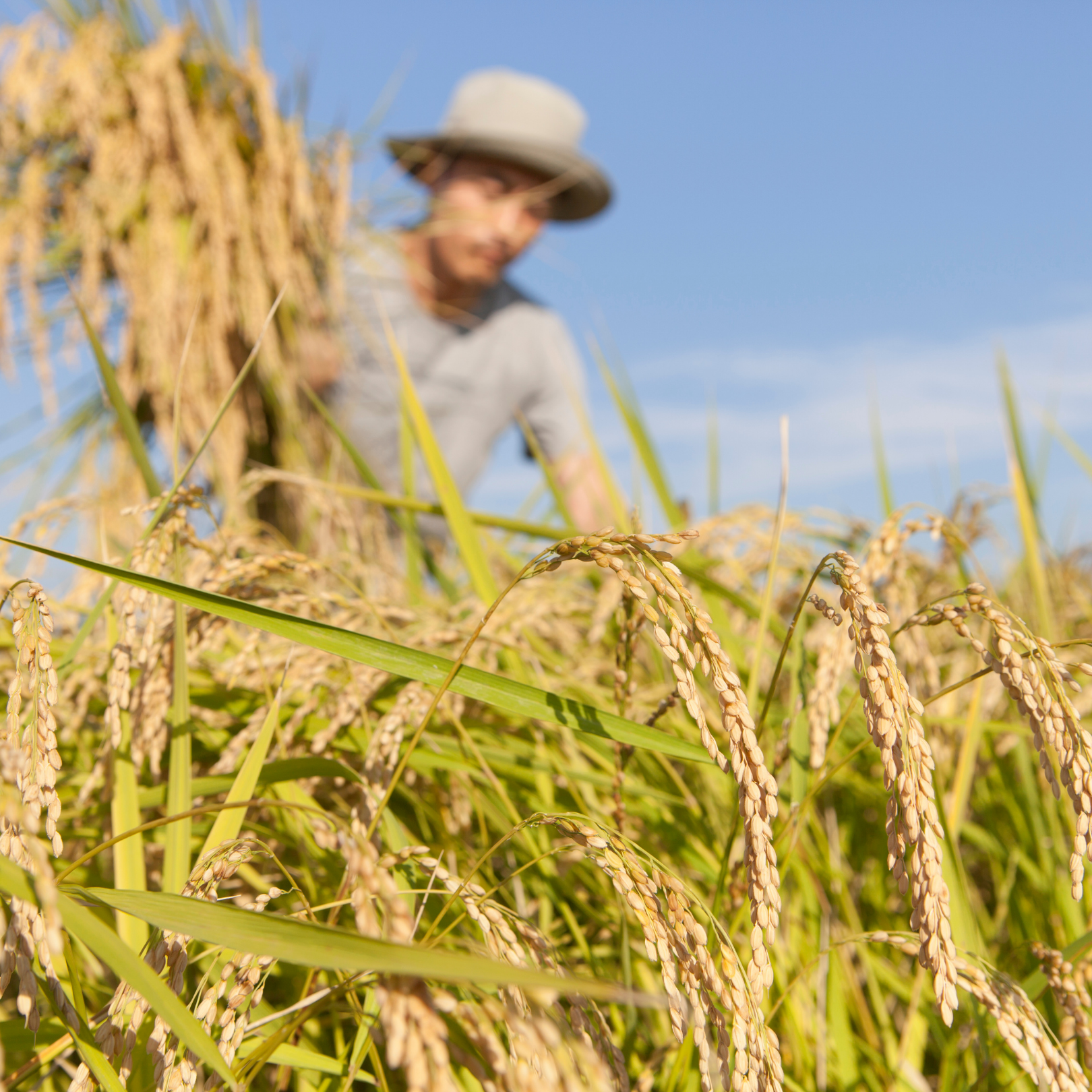
MANILA – The Department of Agriculture – Philippine Rice Research Institute (DA-PhilRice) is urging farmers to follow the recommended seeding rate in rice production for better yields and reduced production costs.
Seeding rate refers to the amount of rice seeds planted per hectare. DA-PhilRice recommends 40 kilograms (kg) per hectare for transplanted rice while 60-80kg per hectare is promoted for direct-seeded.
“When this is followed, rice plants grow healthier because it can receive sufficient sunlight and evenly absorb nutrients from the soil. It can also help produce productive tillers, which would mean higher yields. This recommendation results in good yield and lower farm expenses,” Rizal Corales, chief science research specialist at DA-PhilRice, explained in a statement on Tuesday.
Previously, the usual seeding rate of farmers ranged from 200-250kg/hectare. Many Filipino farmers today are using around 100-150kg of seeds per hectare. Some farmers note that extra seedlings serve as “buffer” during attacks of pests like snails and birds.
However, Corales noted that planting beyond the recommended rate makes farmers spend more and yields low harvest because the plants may produce fewer tillers owing to close spacing, which affect the plants’ ability to receive sunlight and nutrients.
“If we compute it, there are at least 1.6 million seeds in 40kg. A one-hectare farm needs 750,000 seedlings, at 3 seedlings per hill. If high-quality seeds have a germination rate of at least 85 percent, then 40kg seeds can produce 1.3 million seedlings. There could be around 600,000 extra seedlings that farmers can use for replanting in cases when pests cause damage,” Corales said.
Meanwhile, DA-PhilRice through its Rice Competitiveness Enhancement Fund (RCEF) Seed Program also ensures that farmers are equipped and empowered to follow the recommended practice through its services in its 42 target provinces.
“High-quality seeds have high germination rate. Farmers are assured that 40kg is enough because most seeds will germinate. Farmers used to struggle in following the recommendation because they do not have access to high-quality seeds. They source planting materials from their own harvests or from fellow farmers, so seeds did not undergo quality control. Now, access to high-quality is easier with the RCEF-Seed Program,” Corales, also the head of the program’s field operation unit, said.
The RCEF Seed Program also conducts technology demonstrations called PalaySikatan to showcase the effect of using the recommended seeding rate, alongside other modern technologies and practices.
Farm machines such as drum seeder, seed spreader, precision spreader, and drone seeder for direct seeding, and riding-type and walk-behind type mechanical transplanter for transplanting allow a more precise application of the recommended seeding rate.
Recent reports of the monitoring and evaluation study of DA-PhilRice in the 42 target provinces of the RCEF Seed Program showed that farmers have reduced the amount of seeds they used to 86 kg during the 2021 dry season, and later to 76kg during the 2021 wet season. Corales attributes it to the varied efforts to promote and teach farmers to follow the practice.
“We hope to further reduce the seeding rate with the use of farm machinery being used and showcased in various technology demonstration sites established nationwide,” he mentioned.
Dr. Flordeliza Bordey, DA-PhilRice RCEF Program Management Office head, noted that following the recommended seeding rate also proves to be advantageous on a macro scale.
“If farmers in RCEF’s target areas follow the recommendation, it would mean more farmers can be reached and more rice areas can be planted through the program. At most, our overall production can increase and there will be more sources of our country’s staple food,” she said.
The RCEF-Seed Program is a component of Republic Act 11203 or Rice Tariffication Law, which allots P10 billion funds every year for the rice farmers from the rice tariff earnings of the country. The program is a six-year government initiative to help farmers compete in the international rice market. The local government units and lawmakers assist in its implementation. (PR)














